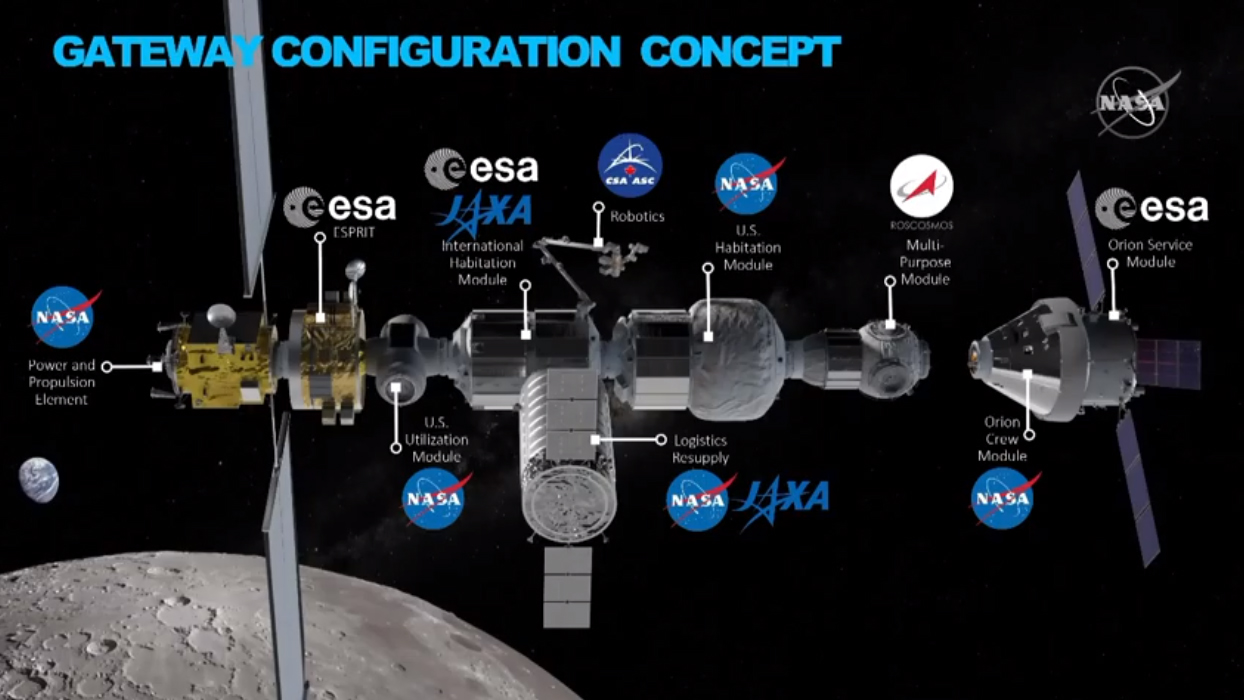NASA may actually have a better chance of pulling off its next moon shot now that the timeline has been moved up four years, agency officials say.
NASA had been planning to put boots on the lunar surface by 2028, in accordance with the moon-oriented Space Policy Directive 1, which President Donald Trump signed in December 2017. But this past March, Vice President Mike Pence announced that the target date for a crewed lunar return is now 2024.
The accelerated schedule increases the technical risks of NASA's newly named Artemis program; it will be tougher to develop and test the required technologies in the shorter time available, after all. But NASA Administrator Jim Bridenstine said he's confident the agency can meet that challenge, and he stressed that the schedule change reduces the second major risk factor for any space program — the political one.
Related: Can NASA Really Put Astronauts on the Moon in 2024?

"The political risk historically, whether it was the Space Exploration Initiative or the Vision for Space Exploration — it's always because priorities change, budgets change, administrations change, Congresses change," Bridenstine said today (May 14) in a town hall address to NASA employees, referring to now-defunct plans drawn up during the presidential administrations of George H.W. Bush and his son George W. Bush, respectively.
"So, how do we retire as much political risk as possible?" Bridenstine added. "We accelerate the program. Basically, the shorter the program is, the less time it takes, the less political risk we endure. In other words, we can accomplish the end state."
The end state, by the way, is not the 2024 landing, which would be the first crewed visit to the lunar surface since the Apollo 17 mission in December 1972. NASA envisions the coming trip as the beginning of a sustainable, long-term presence on the moon. And the lessons learned during the Artemis program will teach the agency and its international partners how to get to the ultimate human-spaceflight destination — Mars.
Get the Space.com Newsletter
Breaking space news, the latest updates on rocket launches, skywatching events and more!
Artemis revolves around several key pieces of infrastructure that are still in development: the Space Launch System megarocket (SLS), a crew capsule called Orion and a small moon-orbiting space station called the Gateway.
If all goes according to plan, the Gateway will serve as a lunar-exploration hub. Surface missions, both crewed and uncrewed, will depart from the orbiting outpost and return there when the work is done.
NASA wants these sorties to employ commercially built landers whenever possible. The agency has asked the private sector to develop lunar landers, and a number of companies are doing just that — including Jeff Bezos' Blue Origin, which just unveiled its big "Blue Moon" spacecraft.
President Trump just proposed adding $1.6 billion to NASA's 2020 budget, to help the agency get the Artemis ball rolling. That number is sufficient for next year, Bridenstine said, but larger increases will be required in the coming years to make the 2024 landing a reality.
NASA has not released estimates of just how much the agency needs for Artemis through 2024. But Bridenstine said the oft-rumored figure of $8 billion per year for the next five years is far too high.
Artemis, by the way, is the goddess of the moon in Greek mythology. She's also the twin sister of Apollo.
- NASA Plans to Build a Moon-Orbiting Space Station: Here's What You Should Know
- In Photos: President Trump Aims for the Moon with Space Policy Directive 1
- Home On the Moon: How to Build a Lunar Colony (Infographic)
Editor's note: The original version of this story incorrectly stated that rumors had pegged the estimated cost of Artemis at $8 million per year for the next five years. The correct figure for the rumor (which NASA officials have refuted) is $8 billion per year.
Mike Wall's book about the search for alien life, "Out There" (Grand Central Publishing, 2018; illustrated by Karl Tate), is out now. Follow him on Twitter @michaeldwall. Follow us on Twitter @Spacedotcom or Facebook.
Join our Space Forums to keep talking space on the latest missions, night sky and more! And if you have a news tip, correction or comment, let us know at: community@space.com.

Michael Wall is a Senior Space Writer with Space.com and joined the team in 2010. He primarily covers exoplanets, spaceflight and military space, but has been known to dabble in the space art beat. His book about the search for alien life, "Out There," was published on Nov. 13, 2018. Before becoming a science writer, Michael worked as a herpetologist and wildlife biologist. He has a Ph.D. in evolutionary biology from the University of Sydney, Australia, a bachelor's degree from the University of Arizona, and a graduate certificate in science writing from the University of California, Santa Cruz. To find out what his latest project is, you can follow Michael on Twitter.








